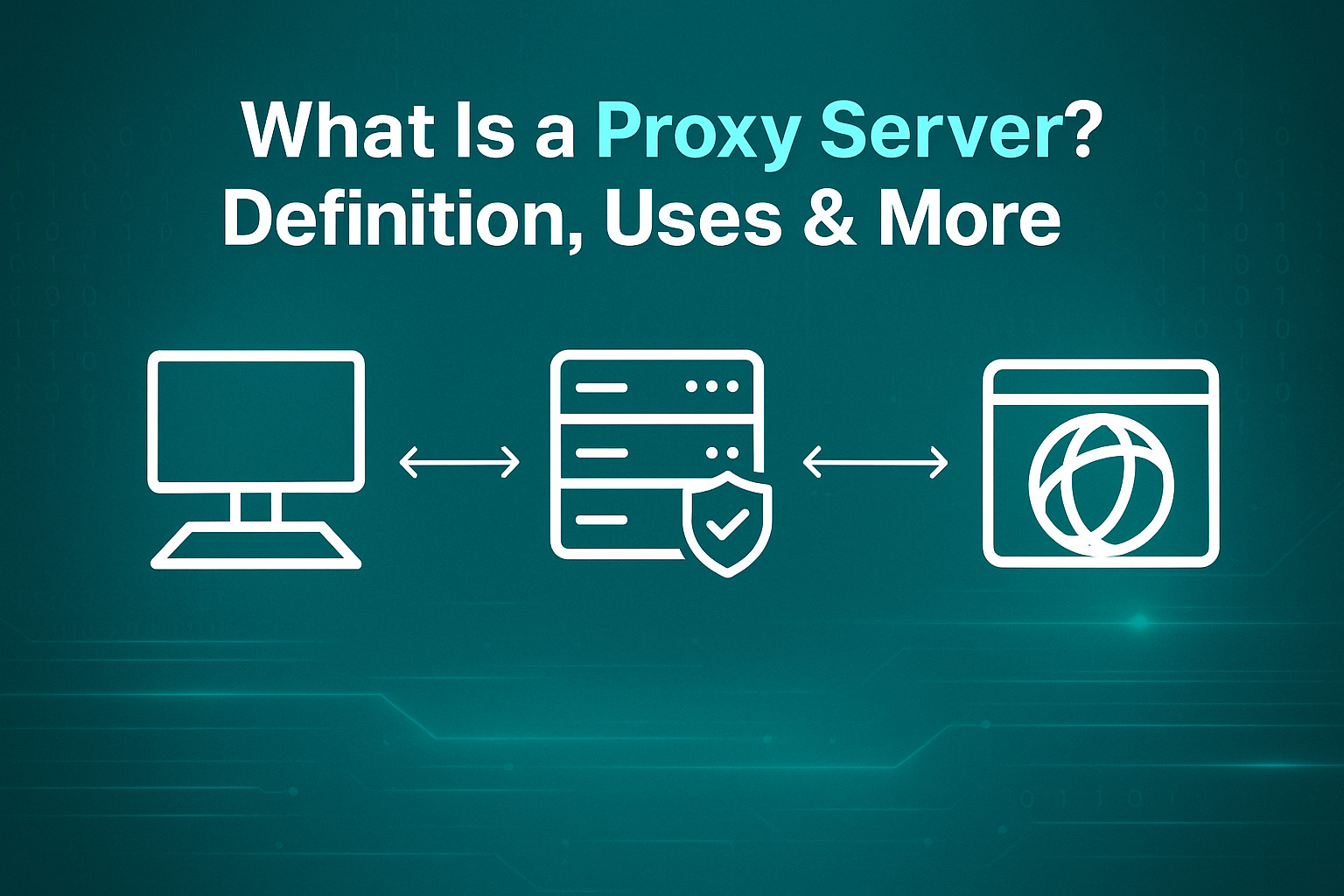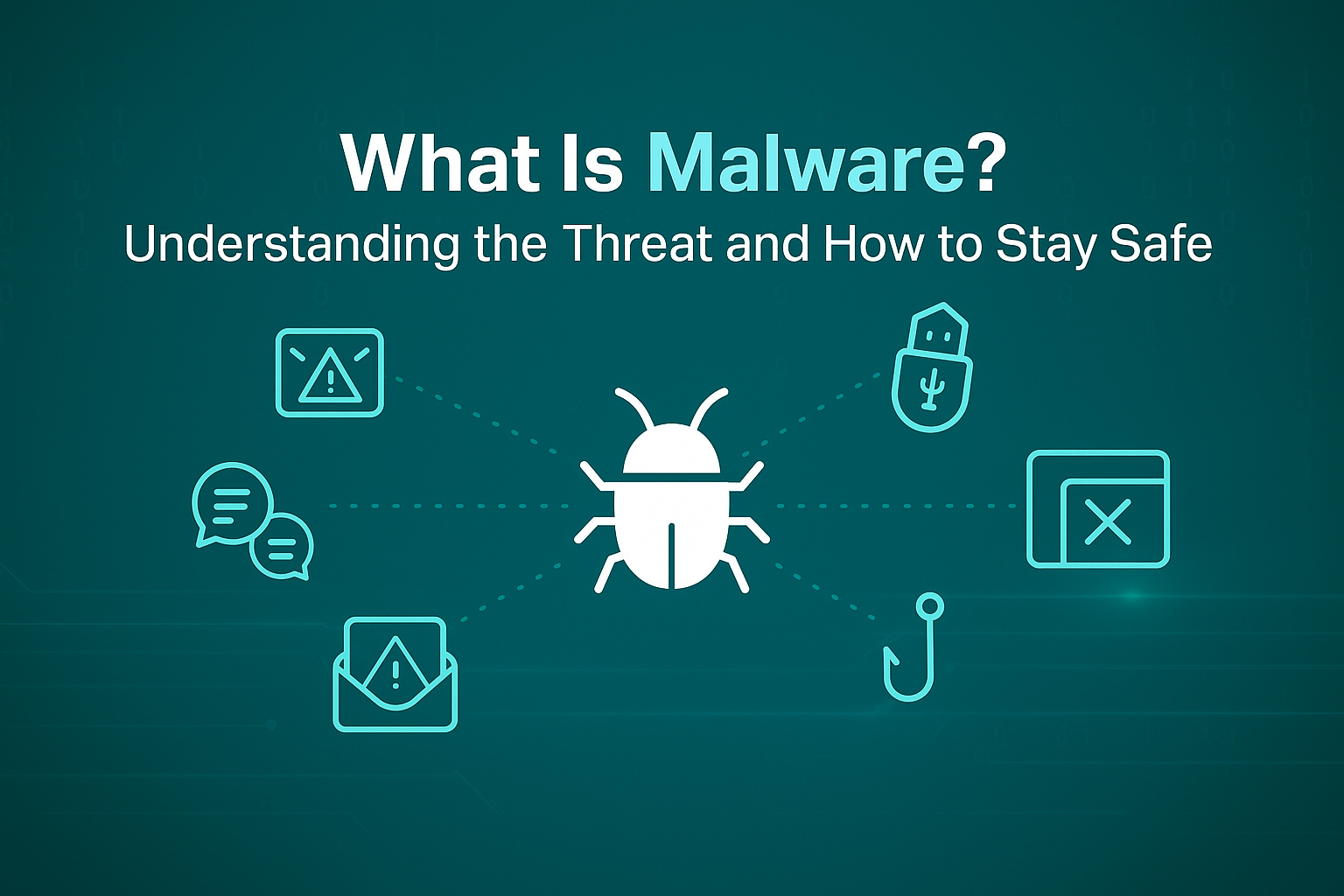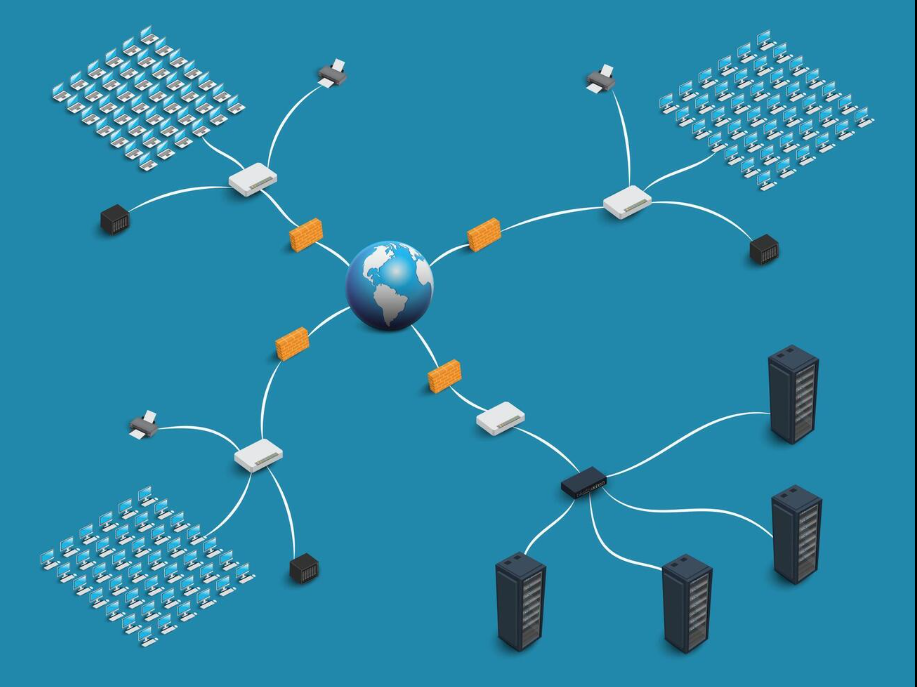What Is An Enterprise Network? Types & Concepts
An enterprise network is a crucial piece of infrastructure that connects computers and related devices across various departments and workgroups within an organization. It includes various components such as routers, switches, firewalls, servers, and wireless access points, facilitating secure and efficient data transfer across multiple locations and departments.
It enables data communication, resource sharing, and efficient operations, forming the backbone of business activities in the digital age. Everyday business operations depend on enterprise networks for contact, data transfer, and application services, which enhance productivity and collaboration.
Components of an Enterprise Network
To understand how the network functions, it's essential to learn the key components that work together to create a robust and efficient digital infrastructure.
Network Infrastructure
-
Switches - Switches such as the S5500-8MHP2XF connect multiple devices within a local area network (LAN) and use packet switching to forward data to its destination.
-
Routers - Routers like the G611 data direct packets between different networks, enabling communication between an enterprise's internal network and external networks like the internet.
-
Firewalls - This protects the network by monitoring and controlling incoming and outgoing network traffic based on predetermined security rules.
Network Protocols
-
Transmission Control Protocol/Internet Protocol (TCP/IP) - This suite of communication protocols is used to interconnect network devices on the internet, providing end-to-end data communication.
-
HyperText Transfer Protocol/Secure (HTTP/HTTPS) - These protocols are used for transmitting web pages on the internet, with HTTPS providing secure, encrypted communication.
End-user Devices
-
Computers - From running essential business applications to accessing email and collaborating with colleagues, workstations rely on a strong network connection to function effectively.
-
Smartphones - These mobile devices empower employees with the flexibility to access critical network resources, check emails, and participate in video conferences on the go.
-
IoT Devices - A growing number of IoT devices, such as smart sensors, actuators, and wearables, are finding their way into enterprise networks. These devices collect and transmit data, enabling automation, remote monitoring, and enhanced operational efficiency.
How Does Enterprise Networking Work?
Enterprise networking links all of a business's gadgets and computers together so that workers can communicate with each other, share information, and make better use of resources. Modems or routers control the flow of data, switches connect network devices, and filters keep threats out of the network.
Access points let people connect wirelessly, and computers store and run programs and data. Protocols that are standardized make sure that data is sent in groups, which keeps contact safe and reliable. Tools for network management keep an eye on how things are running and fix issues as they come up. Technologies like VPNs also make it safe for people to work from home.
Types of Enterprise Networks
Local Area Network (LAN)
A LAN connects devices within a limited area, such as a single building or campus. It provides high-speed data transfer and is typically used for connecting computers, printers, and other peripherals.
Wide Area Network (WAN)
A WAN spans a large geographical area, often a country or continent, connecting multiple LANs. It enables long-distance communication and resource sharing across vast distances.
Metropolitan Area Network (MAN)
A MAN covers a city or metropolitan area, providing high-speed connectivity that spans multiple buildings or campuses within the same city.
Virtual Private Network (VPN)
A VPN creates a secure, encrypted connection over a less secure network, such as the internet. It allows remote users to securely access the enterprise network as if they were physically present.
Cloud-based Networks
These networks leverage cloud computing resources to provide scalable and flexible network services. Enterprises can use cloud-based networks to reduce hardware costs and improve network manageability.
Benefits Of an Optimized Enterprise Network
Here are the key benefits of an optimized enterprise network for business decision-makers and IT professionals:
-
Improved Performance and Speed: An optimized network ensures faster data transfer, reduced latency, and minimal downtime—leading to smoother operations, quicker application response times, and enhanced productivity.
-
Enhanced Security: With proper configuration, an enterprise network includes advanced firewalls, encryption, segmentation, and real-time threat monitoring, reducing the risk of cyberattacks and unauthorized access.
-
Better Scalability: A well-structured network can easily adapt as your organization grows, allowing seamless integration of new devices, users, applications, and branch locations without performance loss.
-
Centralized Management: Optimization allows IT teams to manage devices, data, and traffic from a centralized dashboard, reducing complexity and making it easier to enforce security policies and troubleshoot issues.
-
Increased Uptime and Reliability: Optimized networks minimize connection failures and allow for failover systems or redundancy, ensuring critical business functions remain online with high availability.
-
Cost Efficiency: By reducing bandwidth waste, minimizing downtime, and improving hardware utilization, businesses can lower operational costs and avoid unnecessary infrastructure investments.
-
Support for Remote and Hybrid Work: An optimized enterprise network ensures secure, high-speed access for remote employees, enabling collaboration and access to internal systems without compromising security.
-
Improved User Experience: Whether it’s employees accessing cloud apps or customers using your digital platforms, a reliable and fast network contributes to a smoother, frustration-free experience.
Concepts in Enterprise Networking
Network Security
Firewalls act as the first line of defense. These hardware or software tools enforce security rules, meticulously examining incoming and outgoing traffic to block unauthorized access.
Working alongside firewalls are intrusion detection and prevention systems (IDS/IPS). These vigilant systems constantly monitor network activity, scanning for suspicious patterns that might indicate a potential attack.
If a threat is detected, IDS can send alerts, while IPS can take more immediate action, such as blocking the intrusion attempt altogether. Finally, WPA3 encryption adds protection for sensitive data.
Network Management
Network monitoring tools meticulously track network performance, identifying potential bottlenecks or glitches before they escalate into major issues. These tools provide valuable insights that allow you to proactively address problems and ensure the network continues to operate at peak efficiency.
You can also fine-tune your network using performance optimization techniques and technologies to increase speed and efficiency.
Scalability
When it comes to scaling your network to meet growing demands, there are two main approaches: horizontal scaling and vertical scaling. Horizontal scaling, often referred to as "scaling out," involves adding more devices, like servers or routers, to the network. This distributes the workload across multiple machines, increasing overall capacity. Imagine adding more lanes to a highway to accommodate more traffic.
On the other hand, vertical scaling, or "scaling up," focuses on boosting the capabilities of existing devices by upgrading components such as memory, processors, or storage.
Reliability and Redundancy
In the event of a hardware failure, cyberattack, or other errors, backup systems serve as a safety net, creating copies of your data that you can use to restore critical information. This ensures business continuity and minimizes downtime. Working hand-in-hand with backups are failover mechanisms. If the primary server or network component encounters an issue, these automated systems seamlessly switch operations to a standby one.
Network Topologies
A network's topology determines the arrangement of its devices and connections. The following are the different types of network topologies available to date:
-
Bus Topology - All devices are connected to a single central cable, known as the bus. This topology is easy to install but can be challenging to troubleshoot.
-
Star Topology - All devices are connected to a central hub. This topology is easy to manage and expand but relies heavily on the central hub.
-
Ring Topology - Each device is connected to two other devices, forming a ring. Data travels in one direction, and each device acts as a repeater.
-
Mesh Topology - Devices are interconnected, with each device connected to multiple other devices. This provides high redundancy and reliability.
-
Hybrid Topology - A combination of two or more different topologies, such as a star-bus or star-ring network, to leverage the benefits of each.
Enterprise Network Design Principles
Priorities must be balanced to build a solid enterprise network. Scalability, security, performance, and manageability matter. The network must grow with the company, secure sensitive data, provide fast and reliable connections, and be easy to manage and fix.
Technology is always developing to meet these needs. SDN and NFV enable flexible and cost-effective network management. The Internet of Things (IoT) requires new strategies for managing millions of connected devices, while 5G promises network improvements.
However, future challenges remain. Security risks require constant attention, network congestion can disrupt operations, integrating new technology with legacy systems is difficult, and constructing a resilient network is expensive. Enterprises must carefully negotiate these obstacles to provide a stable and secure network for digital activities.
Top Trends in Enterprise Networking
The continued use of technology and the shifting needs of businesses are what drive the advancement of enterprise networking.
-
The Rise of Cloud Networking - Businesses are increasingly integrating on-premises infrastructure with multiple cloud services to achieve more flexibility and scalability.
-
Software-Defined Networking (SDN) - A centralized management system and dynamic network setup are both made possible by software-defined networking (SDN), which separates the control plane from the data plane.
-
Network Function Virtualization - This results in a decrease in expenses and an increase in flexibility. Network Function Virtualization (NFV) replaces traditional network hardware with software that runs on commercial off-the-shelf (COTS) hardware.
-
Enhanced Security Measures - An approach to security that operates under the assumption that no user or device can be trusted by default, requiring strict verification and access controls. AI and machine learning are utilized to identify and respond to potential security issues in real time.
-
5G and Wi-Fi 6 - Both 5G and Wi-Fi 6 offer significantly improved network performance, which allows for a greater number of devices to be supported and higher data throughput.
Conclusion
Modern businesses depend on enterprise networks for communication, data sharing, and application services. Organizations must understand enterprise network components, types, concepts, and difficulties to design and operate a network that fits their demands. SDN, NFV, IoT, and 5G are changing enterprise networking, creating new opportunities and challenges for enterprises.
Enhance your business's potential with TP-Link's enterprise networking solutions. Their comprehensive range of routers, switches, and access points provides unwavering reliability, scalability for growth, and robust security features—all managed through user-friendly interfaces.
FAQs
1. What are the benefits of an enterprise network?
Enterprise networks boost productivity by providing centralized access to files, applications, and communication tools. They improve collaboration, ensure security, support scalability, and reduce operational costs by optimizing IT infrastructure.
2. How does security work in an enterprise network?
Enterprise networks use multiple security layers such as firewalls, VPNs, intrusion detection systems, and access controls. These tools help prevent unauthorized access, data breaches, and malware attacks.
3. What is network segmentation in enterprise systems?
Network segmentation is the practice of dividing a network into smaller sub-networks (or segments). This enhances security and performance by isolating sensitive data and reducing congestion.
4. Who manages an enterprise network?
Enterprise networks are managed by in-house IT teams or outsourced to managed service providers (MSPs). They handle setup, monitoring, troubleshooting, and security.



_20240830071121x.jpg)
_20240830062251t.jpg)
_20240830055723o.jpg)